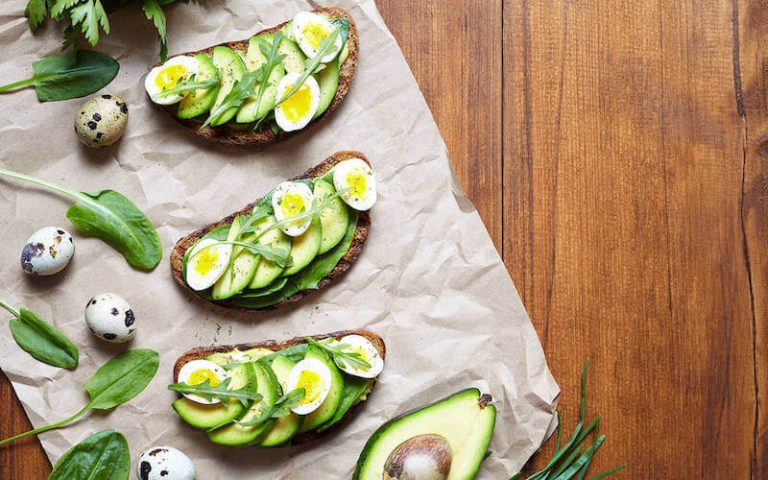Is Prawns Good for Diabetes? A Complete Guide to Nutritional Value and Blood Sugar Impact
Diabetes management revolves around making smart food choices that support stable blood sugar levels and overall health. One frequently asked question is, is prawns good for diabetes? Seafood, in general, is often considered a healthy protein option, but diabetics must be mindful of cholesterol, preparation methods, and portion sizes. In this article, we explore whether prawns can be a healthy inclusion in a diabetic-friendly diet, analyze their nutritional value, glycemic impact, and discuss the best ways to enjoy them safely.
Understanding the Nutritional Profile of Prawns
Prawns are a type of shellfish packed with essential nutrients. They are low in calories, low in carbohydrates, and high in protein, which makes them ideal for people who need to monitor their blood sugar. A 100-gram serving of cooked prawns contains approximately 99 calories, 24 grams of protein, 0.2 grams of fat, and 0 grams of carbohydrates. This carbohydrate-free nature is especially important for individuals managing diabetes.
Prawns also contain vital nutrients like selenium, vitamin B12, iron, iodine, and omega-3 fatty acids. These nutrients support heart health, brain function, thyroid regulation, and immune response—all of which can be compromised in people with diabetes if not carefully managed.
Are Prawns Good for People with Diabetes?
So, is prawns good for diabetes? Yes, prawns can be a very good food choice for diabetics when eaten in moderation and prepared in a healthy way. Since prawns contain no carbohydrates, they have no direct impact on blood glucose levels. The high protein content in prawns slows digestion and helps with satiety, which can aid in appetite control and weight management—both critical factors in managing type 2 diabetes.
However, prawns do have a relatively high cholesterol content. A 100-gram serving contains about 189 mg of cholesterol. While dietary cholesterol was once believed to be a significant risk factor for heart disease, newer research suggests that for most people, saturated fat and trans fats play a bigger role. That said, individuals with diabetes are already at increased risk for cardiovascular disease, so it’s important to eat prawns in moderation and balance them with other heart-healthy foods.
Glycemic Index and Impact on Blood Sugar
The glycemic index (GI) of a food indicates how much it raises blood sugar levels. Foods high in simple carbs typically have a high GI. Since prawns have virtually no carbohydrates, they have a GI of zero. This makes them an ideal protein source for diabetics who are trying to manage blood sugar spikes.
Including prawns in a balanced meal—alongside non-starchy vegetables and a portion-controlled whole grain—can help create a well-rounded, blood sugar–friendly plate. The protein from prawns will help slow the absorption of carbohydrates from other meal components, preventing sudden glucose elevation.
Health Benefits of Prawns for Diabetics
- High Protein Content: Protein-rich foods support muscle maintenance, metabolic health, and prolonged satiety. This can help reduce unhealthy snacking and regulate hunger cues.
- Low Glycemic Impact: Since prawns contain zero carbs, they don’t cause blood sugar spikes, making them safe for both type 1 and type 2 diabetes.
- Rich in Omega-3 Fatty Acids: These healthy fats help reduce inflammation, support brain health, and may improve insulin sensitivity.
- Nutrient Dense: Prawns provide selenium, zinc, iodine, and vitamin B12, all of which support immune health, thyroid function, and red blood cell production.
- Weight Management: Low in calories and high in protein, prawns help support healthy weight—a critical factor in reversing prediabetes and controlling type 2 diabetes.
How to Cook Prawns for Diabetics
The benefits of prawns for diabetics can be compromised if they are cooked with unhealthy ingredients. Avoid deep frying or battering prawns, as these methods add saturated fats and refined carbs that may spike blood sugar levels.
Better cooking methods include:
- Grilling
- Steaming
- Boiling
- Sautéing with olive oil and herbs
Use herbs and spices like garlic, turmeric, paprika, parsley, and lemon for flavor without adding unnecessary sugar or salt. Combine prawns with high-fiber vegetables such as spinach, broccoli, bell peppers, or zucchini to create a nutrient-dense plate that promotes satiety and blood sugar balance.
Prawn Recipes Suitable for Diabetics
- Grilled Lemon-Garlic Prawns Marinate prawns in lemon juice, olive oil, garlic, and parsley. Grill until cooked. Serve with a quinoa salad for a complete meal.
- Prawn Stir-Fry with Vegetables Sauté prawns with bok choy, bell peppers, carrots, and snow peas in olive oil and low-sodium soy sauce. Serve over a small portion of brown rice.
- Steamed Prawns with Ginger and Green Onions Steam prawns with sliced ginger and scallions. Finish with a splash of lemon or lime. Pair with steamed broccoli or cauliflower rice.
Portion Control and Frequency
While prawns are a great food choice for people with diabetes, portion size still matters. A recommended serving is about 3 to 4 ounces (85 to 115 grams) per meal. Too much protein can place stress on the kidneys, especially in individuals with diabetic nephropathy. Moderation is key.
Also, balance prawn consumption with other sources of lean protein such as chicken breast, tofu, eggs, or legumes to ensure dietary diversity.
Concerns and Considerations
- Cholesterol Content: Though dietary cholesterol doesn’t affect everyone the same way, diabetics should be cautious. Consult a doctor if you have elevated LDL cholesterol.
- Sodium Levels: Some processed or frozen prawns are treated with sodium-rich preservatives. Always check the label and rinse before cooking.
- Allergies: Shellfish is a common allergen. If you have any allergic symptoms like swelling, itching, or difficulty breathing after eating prawns, seek medical attention.
- Sustainability and Quality: Choose wild-caught or responsibly farmed prawns to avoid contaminants and ensure environmental sustainability. Avoid prawns imported from farms using antibiotics or harmful chemicals.
Complementary Foods to Pair with Prawns
- Leafy greens (spinach, kale, arugula)
- Whole grains in moderation (quinoa, brown rice, barley)
- Healthy fats (avocado, olive oil, nuts)
- Legumes (lentils, black beans)
- Non-starchy vegetables (cabbage, zucchini, cucumber)
Prawns vs. Other Seafood for Diabetes
Compared to other protein sources like red meat or processed meats, prawns offer a cleaner profile for diabetics. Compared to fatty fish like salmon or mackerel, prawns are lower in omega-3s but still beneficial. They make an excellent part of a rotating seafood plan that includes oily fish, white fish, and shellfish.
Scientific Research and Expert Opinion
According to the American Diabetes Association (ADA), fish and seafood are recommended protein sources for people with diabetes due to their low saturated fat content and positive impact on heart health. The ADA also supports the inclusion of lean proteins that do not significantly impact blood glucose levels, placing prawns among the safer protein choices.
Conclusion
To answer the question, is prawns good for diabetes?—yes, prawns can be a healthy addition to a diabetic diet when prepared correctly and consumed in moderation. Their zero-carb nature, rich nutrient profile, and high protein content make them suitable for blood sugar control and overall health. By avoiding fried and breaded versions and opting for grilled or steamed preparations, people with diabetes can enjoy prawns without compromising their glucose levels.
Consult your dietitian or healthcare provider to determine how often you can include prawns in your meal plan based on your overall health, cholesterol levels, and kidney function. A thoughtful and balanced approach will ensure prawns support rather than hinder your diabetes management.
FAQs
1. Can people with type 2 diabetes eat prawns?
Yes, prawns are a low-carb, high-protein option suitable for type 2 diabetics when cooked healthily and eaten in moderation.
2. Do prawns raise blood sugar levels?
No, prawns contain no carbohydrates and have a glycemic index of zero, meaning they do not raise blood sugar levels directly.
3. Are prawns high in cholesterol?
Yes, prawns contain dietary cholesterol, but recent research suggests it has less impact on blood cholesterol than once thought. Still, moderation is advised.
4. How should diabetics cook prawns?
Best cooking methods include grilling, steaming, or sautéing in olive oil. Avoid breaded or fried prawns to prevent unhealthy fat and carb intake.
5. Are frozen prawns safe for diabetics?
Yes, but check for added sodium or preservatives. Rinse thoroughly and avoid pre-seasoned varieties.
6. Can prawns be eaten daily by diabetics?
While prawns are healthy, they should be part of a varied diet. Eating them 2–3 times a week is generally considered safe for most.
7. Do prawns have carbs or sugar?
No, prawns do not contain carbohydrates or sugars, making them ideal for blood sugar control.
8. Are prawns good for weight loss in diabetics?
Yes, prawns are low in calories and high in protein, which supports satiety and can aid in weight loss efforts.
9. Can prawns affect kidney function in diabetics?
Excessive protein intake can strain the kidneys, especially in those with existing kidney issues. Diabetics with kidney concerns should consult their doctor.
10. What are the best sides to eat with prawns for diabetics?
Great pairings include leafy greens, quinoa, roasted vegetables, and legumes—all of which support balanced blood sugar levels.






